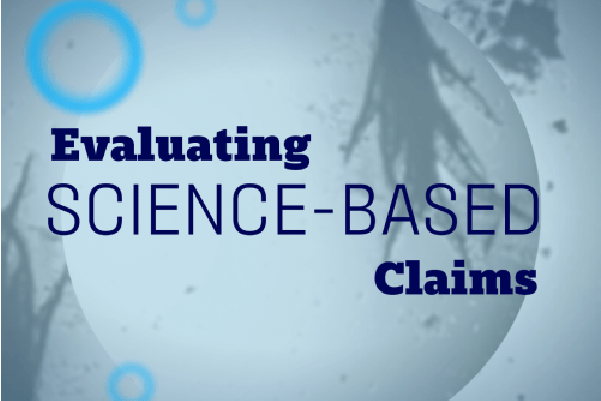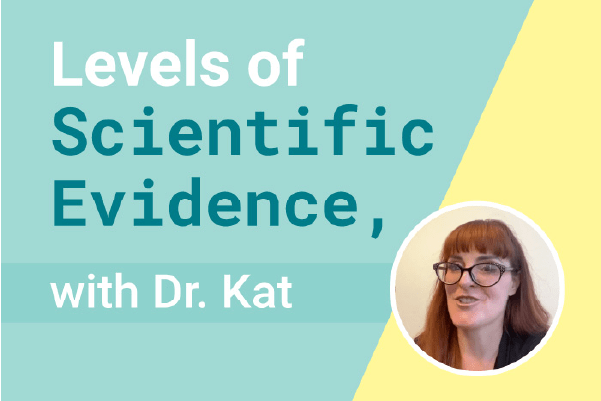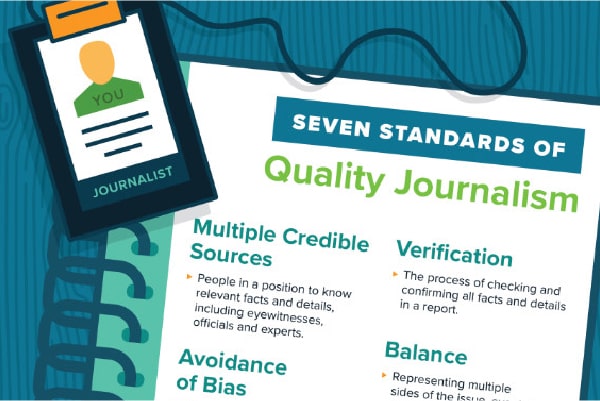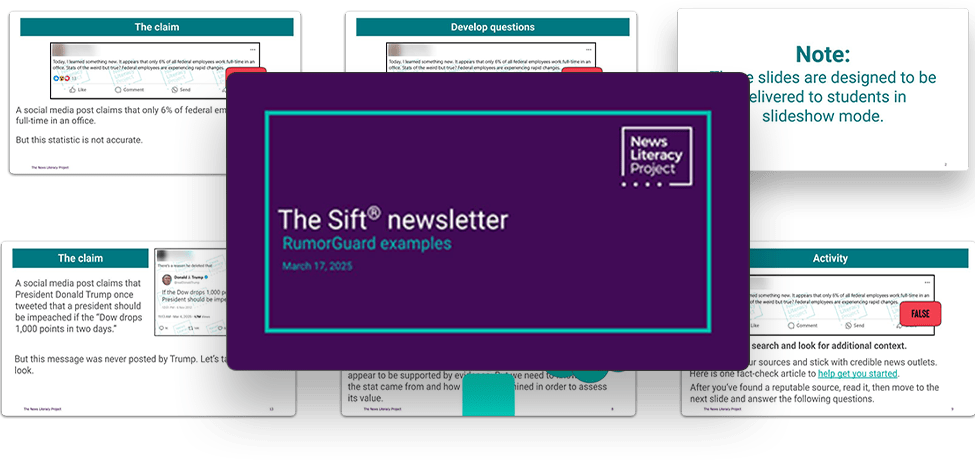The Sift: Measles myths | Teen watchdog
| Note: The Sift is taking a spring break next week and will return to your inbox on Monday, March 31. |
In this issue
Measles myths | Teen watchdog | RumorGuard slides | Daily Do Now slides
 Daily Do Now slidesDon't miss this week's classroom-ready resource.  |
Top picks
Educators, here are the latest news literacy topics and tips on how to integrate them into your classroom.

| Lower vaccination rates have led to measles outbreaks across the U.S. |
1. Distrust, misinformation fuel measles outbreak
Measles was declared eliminated from the U.S. in 2000 but an outbreak of the disease has health professionals warning against dangerous misinformation as infections spread. Vaccines provide effective protection against measles, but false claims about vaccine safety and the effectiveness of Vitamin A supplements as a preventative measure have taken root in some communities. A measles outbreak in West Texas resulted in the death of a 6-year-old Mennonite girl — the first U.S. measles death in a decade. The World Health Network has urged people to “rely on accurate, science-based information” and noted, “Misinformation undermines public health efforts, leading to preventable harm.”
| Discuss: |
Why do some people doubt or distrust scientific consensus around vaccines? How can you evaluate health claims online to determine what to trust? What makes people vulnerable to misinformation about health topics?
★ NLP Resources:


“Be Health Informed” (Checkology virtual classroom)


“Evaluating Science-Based Claims” (Checkology virtual classroom)


Infographic: “Levels of scientific evidence”
| Related: |
- “Health officials prepare for measles spread as disinformation threatens already low vaccination rates” (CNN).
- “Doctors push back as parents embrace Kennedy and vitamin A in Texas measles outbreak” (Reuters).
- Podcast: “Measles Misinformation Sparks Concern, Supreme Court Weakens EPA, and Scientists Engineer Woolly Mice” (Science Quickly, Scientific American).
2. Russian disinfo floods AI chatbots
Russian disinformation networks are using a troublesome tactic to push pro-Kremlin falsehoods: manipulating AI chatbots. They do this by flooding the web with disinformation, which gets used to train artificial intelligence tools. A recently published NewsGuard study found that 10 leading AI chatbots all repeated false narratives pushed by Russia’s Pravda propaganda network, which published 3.6 million articles last year. Seven of the 10 chatbots also cited Pravda as a legitimate news source.
| Discuss: |
What skills can help you determine whether a news source cited by a chatbot is credible? What opportunities and challenges do AI chatbots present? How can you tell whether a news article is AI-generated or not?
★ NLP Resources:


Lesson: “AI or not?”


Infographic: “6 things to know about AI”


“Introduction to Algorithms” (Checkology virtual classroom)
| Related: |
3. Michael Jackson’s death changed breaking news
In life, Michael Jackson reigned as the “King of Pop,” but media coverage of his death forever changed how breaking news is reported. The first to report Jackson’s death on June 25, 2009, was TMZ, a controversial digital media outlet that pays sources — a practice that goes against journalism ethics at standards-based news outlets, according to a Poynter retrospective by Amaris Castillo [link warning: minor profanity]. Meanwhile, major news outlets like CNN and The Associated Press hesitated to report Jackson’s death until they could independently verify TMZ’s scoop. This hesitation created a brief divide between news audiences online, where it was reported Jackson was dead, and news audiences turning to TV networks, where his death was still unconfirmed. Eventually, the Los Angeles Times confirmed Jackson’s death, and other news outlets soon followed. TMZ’s scoop, Castillo writes, upended expectations for breaking news and marked the beginning of an era in journalism where “speed, access and aggressive digital reporting could outmaneuver even the top legacy newsrooms.”
| Discuss: |
In journalism, why do you think paying sources for content is considered unethical? Why did it take legacy news outlets longer to report Jackson’s death? Does paying for information impact a source’s credibility? Why or why not? How should responsible news organizations balance speed with accuracy?
| Idea: |
Use the “Quality journalism” slide in Week 17 of the Daily Do Now resource to further explore why journalists view paying sources as unethical.
★ NLP Resources:


“Practicing Quality Journalism” (Checkology virtual classroom)


Infographic: “Breaking news checklist”
| Related: |


★ Featured classroom resource:
|
No, Trump never said a president should be impeached if stocks fall


❌ NO: This is not a genuine post from President Donald Trump.
✅ YES: This is a piece of impostor content.
✅ YES: The Dow Jones Industrial Average, a stock market index, dropped by more than 1,000 points in two days in early March.
✅ YES: This fake tweet first circulated online in 2018 after a similar stock market plunge.
★ NewsLit takeaway
Fake tweet generators allow purveyors of misinformation to create convincing pieces of impostor content. These fabricated posts can be difficult to spot by visuals alone. But there are ways to quickly identify and debunk them:
Check the source: Navigate to the alleged source (in this case Trump’s X account) and see if the post exists.
Look for additional coverage: A post like this would garner news coverage. If there’s no reporting on it from credible news outlets, something may be amiss.
Be skeptical of supposed screenshots: When a social media post circulates just as an image without a link back to its source, the post may be a fabrication.
No, it’s not true that only 6% of federal employees work in an office


❌ NO: The percentage of federal employees who report to work in offices is not 6%.
✅ YES: A 2024 study from the Office of Management and Budget found that more than 50% of federal employees work fully on-site.
✅ YES: The claim that only 6% of federal employees work in office is based on a nonscientific, opt-in survey by Federal News Network, a news outlet that covers the federal government.
✅ YES: Federal News Network amended its survey report to clarify its data wasn’t representative of all government workers.
★ NewsLit takeaway
Viral claims that circulate on social media accompanied by statistics can seem true and appear to be supported by evidence. But figures can be misleading. Here are a few things to keep in mind to help make sense of data.
What is the source of the information? This viral post does not include any links back to a source for this statistic, a red flag to view it with skepticism.
How was the data collected? Fact-checkers traced this statistic back to a nonscientific survey by Federal News Network in April 2024 that involved a small sample of only several thousand federal employees (out of a total workforce of more than 3 million).
Is the data an outlier? Other studies of the federal workforce by the Office of Management and Budget and the Office of Personnel Management found that over half of all government employees work on-site.


| Darnella Frazier was a 17-year-old high school student when she recorded the 2020 murder of George Floyd by a Minneapolis police officer — and demonstrated the power of citizen journalism. Her 10-minute video captured history and earned her a citation by the Pulitzer Prize Board. | |
| Two new AI chatbots aim to counter misinformation in marginalized communities: The Digital Green Book is designed to help Black users access reliable news and Factchequeado’s ChatMigrante works to provide Spanish speakers with accurate information on immigration issues. (Note: Factchequeado’s website is in Spanish.) | |
| An AI-generated video of half-human, half-panda babies. Graphic medical procedures. Dead bodies. These are some of the bizarre and sometimes violent content teens are coming across on Instagram, despite stricter settings for minors. [Link warning: Disturbing content.] | |
| Bad sleep doesn’t just make you tired or depressed. Researchers found that poor sleep could also fuel conspiratorial thinking. A separate study also linked unmet psychological needs with conspiracy beliefs. | |
| The Department of Homeland Security has begun using polygraph tests on employees to find out if they’re leaking information to news media. Poynter’s Tom Jones says it appears to be the first time a federal agency is using lie detector tests for this purpose. | |
| War zones are challenging for journalists to cover — they’re not only chaotic but dangerous. This profile on NPR producer Anas Baba showcases his last 17 months in Gaza covering the Israel-Hamas war and the toll it’s taken on him. | |
| Feel like you see misinformation everywhere? A science professor in this Guardian piece argues that too much skepticism may not be a good thing, as people then run the risk of doubting things that are true. | |
| “Prebunking” — or training people to detect misinformation through videos, articles or a game before they encounter false claims — is an effective method in countering misinformation, a study of more than 11,000 people found. |
Thanks for reading!
Your weekly issue of The Sift is created by Susan Minichiello (@susanmini.bsky.social), Dan Evon (@danieljevon), Peter Adams (@peteradams.bsky.social), Hannah Covington (@hannahcov.bsky.social) and Pamela Brunskill (@PamelaBrunskill). It is edited by Mary Kane (@mk6325.bsky.social) and Lourdes Venard (@lourdesvenard.bsky.social).
You’ll find teachable moments from our previous issues in the archives. Send your suggestions and success stories to [email protected].
Subscribe to this newsletterSign up to receive NLP Connections (news about our work) or update your subscription preferences here. |


Check out NLP's Checkology virtual classroom, where students learn how to navigate today’s information landscape by developing news literacy skills.





